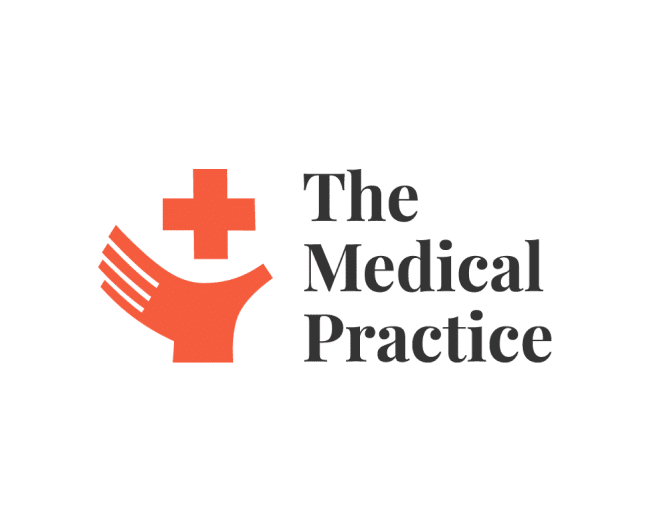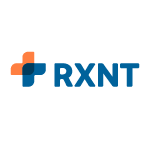10 Best Pharmacy Software Shortlist
Here's my pick of the 10 best software from the 20 tools reviewed.
Our one-on-one guidance will help you find the perfect fit.
As an individual with an extensive understanding of the retail pharmacy landscape, I'm here to introduce you to a groundbreaking pharmacy software system - a versatile and all-inclusive point of sale (POS) and pharmacy management solution. This end-to-end, web-based software supports every facet of your pharmacy business from inventory control and management of wholesalers to customer satisfaction and expiry tracking.
In a nutshell, this pharmacy software system is a comprehensive, ERP-based tool that integrates all pharmacy operations into a seamless workflow. It is an investment that translates into greater efficiency, improved patient care, and increased profitability for your pharmacy business. Discover the comprehensive guide to understanding and exploring the world of pharmacy software—check out our list now!
What Is A Pharmacy Software?
Pharmacy software constitutes a critical component in the healthcare technology ecosystem, designed to streamline and optimize the operations of pharmacies. It serves as a vital tool for pharmacists, pharmacy technicians, and other pharmacy staff, facilitating the management of various tasks including prescription processing, inventory control, patient data management, and medication dispensing.
The software also aids in maintaining regulatory compliance, ensuring patient safety, and improving efficiency. Furthermore, its use extends to diverse settings ranging from community pharmacies to hospital pharmacies and even long-term care facilities. With the utilization of pharmacy software, these healthcare providers can offer better patient care and increase productivity while reducing errors and omissions.
The jewel in the crown is the integrated mobile app, a boon for both pharmacy owners and patients that facilitates smooth refills, and easy tracking, and ensures ongoing customer engagement. This software is not just for retail pharmacies, but also caters to the specific needs of long-term care pharmacies (LTC) and outpatient settings, making it a versatile choice for your pharmacy needs.
Best Pharmacy Software Summary
| Tool | Best For | Trial Info | Price | ||
|---|---|---|---|---|---|
| 1 | Best for centralizing pharmacy operations across care settings | Not available | From $150/user/month | Website | |
| 2 | Best for enhancing pharmacy profitability and patient care | Not available | From $199/user/month | Website | |
| 3 | Best for comprehensive management of health system pharmacies | Not available | From $179/user/month | Website | |
| 4 | Best for integrating patient data across multiple platforms | Not available | Pricing upon request | Website | |
| 5 | Best for electronic medication administration records | Not available | From $20/user/month | Website | |
| 6 | Best for independent pharmacy data control and management | Not available | From $200/user/month | Website | |
| 7 | Best for open-source pharmacy management needs | Not available | From $24/user/month (billed annually) | Website | |
| 8 | Best for electronic prescription and medical record handling | Not available | From $300/user/month (billed annually) | Website | |
| 9 | Best for user-friendly and efficient pharmacy operations | Not available | From $150/user/month | Website | |
| 10 | Best for document and workflow management in pharmacies | Not available | From $100/user/month (billed annually) | Website |
Best Pharmacy Software Reviews
Best for centralizing pharmacy operations across care settings
Omnicell Central Pharmacy Manager Software is a comprehensive system that streamlines and centralizes pharmacy operations. Designed to optimize workflow across various care settings, it simplifies medication management, ultimately contributing to patient safety and efficiency.
Why I Picked Omnicell Central Pharmacy Manager Software:
When examining various tools, Omnicell Central Pharmacy Manager Software stood out due to its ability to bring pharmacy operations under one unified system. It's distinct because of its multi-care setting functionality, providing centralized control that's crucial for larger healthcare establishments or complex pharmacy environments. I am of the opinion that for centralizing pharmacy operations across care settings, this tool shows a clear strength.
Standout Features and Integrations:
Omnicell boasts several useful features like centralized patient medication profiles, real-time inventory tracking, and automated medication dispensing. As for integrations, it interfaces smoothly with several electronic health record (EHR) systems, billing platforms, and other healthcare IT solutions, facilitating seamless data transfer and collaboration.
Pros and cons
Pros:
- Seamless integration with various health IT systems
- Real-time inventory tracking aids in efficient medication management
- Centralized control over pharmacy operations
Cons:
- Customization options could be more diverse
- Interface may seem complex initially requiring training
- High starting price may not be ideal for smaller establishments
PioneerRX is a comprehensive pharmacy management software that aims to elevate your pharmacy's performance while prioritizing patient care. It's particularly suited to enhancing pharmacy profitability and patient care due to its array of advanced tools designed specifically for this purpose.
Why I Picked PioneerRX:
I chose PioneerRX because of its comprehensive features that target both the business and patient care aspects of running a pharmacy. It stands out for its ability to efficiently manage pharmacy operations while prioritizing the health outcomes of patients. This tool seemed best for enhancing profitability and patient care due to its robust workflow management and patient management tools.
Standout Features and Integrations:
PioneerRX's features include an easy-to-use interface, advanced reporting tools, and a robust prescription synchronization feature that promotes adherence and improves patient outcomes. It also boasts an integrated patient notification system, keeping patients informed about their medications.
This software integrates with a host of other platforms, such as billing systems, electronic health records, and telepharmacy tools, enabling a smooth flow of information across different systems and enhancing overall efficiency.
Pros and cons
Pros:
- Robust reporting for informed decision-making
- A host of integrations with other systems for smooth operations
- Advanced tools to enhance profitability and patient care
Cons:
- Some users may find the interface somewhat complex
- There might be a steep learning curve for users not familiar with such comprehensive software
- The pricing might be higher than other tools in the market
McKesson is a pharmacy software designed to streamline the myriad of tasks related to health system pharmacies. This innovative software solution boasts comprehensive management tools that work in concert with your needs.
Why I Picked McKesson:
In my analysis, I found that McKesson distinguishes itself through its robust set of features and intuitive interface. I chose McKesson because it delivers comprehensive solutions for health system pharmacies, from prescription management to maintaining regulatory compliance. Its aptitude for managing multiple facets of a health system pharmacy makes it the best choice for this particular use case.
Standout Features and Integrations:
McKesson offers a wide range of features including electronic prescribing, inventory management, and robust reporting tools. Its standout feature, however, is its ability to handle large-scale pharmacy operations, which is essential for health systems. As for integrations, McKesson syncs with numerous healthcare and pharmacy systems, allowing for seamless data exchange and better patient care.
Pros and cons
Pros:
- Robust reporting capabilities
- Strong integrations with other healthcare and pharmacy systems
- Comprehensive suite of tools for managing pharmacy operations
Cons:
- Limited customization options
- High starting price point may not be affordable for smaller pharmacies
- Steeper learning curve for first-time users
Cerner is a dynamic pharmacy software solution renowned for its capabilities in handling patient data across diverse platforms. As a significant player in the healthcare technology sector, Cerner aids pharmacies in becoming more connected and integrated.
Why I Picked Cerner:
In the quest for the best pharmacy software, I selected Cerner for its proven strength in data integration. It’s not just a regular pharmacy tool, but a comprehensive software solution that allows for efficient patient data management across platforms. Its integration capabilities make it stand out, thereby affirming its position as the best tool for managing patient data on multiple platforms.
Standout Features and Integrations:
Cerner provides an impressive suite of features, including prescription processing, inventory tracking, and robust reporting. One of its distinguishing features is its superior ability to manage and integrate patient data from various sources. It supports a wide range of integrations with other healthcare systems, ensuring efficient sharing of data for enhanced patient care.
Pros and cons
Pros:
- Comprehensive feature set for pharmacy management
- Wide range of healthcare system integrations
- Exceptional patient data management across various platforms
Cons:
- Occasional issues reported with customer support
- High starting cost could be a barrier for smaller pharmacies
- May be more complex for less tech-savvy users
eMAR is a specialized software that focuses on providing effective electronic medication administration records management. It's designed to enhance accuracy and efficiency in recording and tracking medication administration, making it a crucial tool for healthcare providers.
Why I Picked eMAR:
I selected eMAR for this list due to its focus on a critical aspect of healthcare - medication administration records. It's unique in its dedication to this niche, providing capabilities that are specifically engineered for this purpose. The precision and efficiency it brings to medication record management underscore its value, making it the best choice for managing electronic medication administration records.
Standout Features and Integrations:
eMAR provides a range of features to help healthcare providers streamline their medication record administration. These include a user-friendly interface for recording medication, alerts for medication times, and accurate tracking of medication administration. It integrates well with various healthcare and hospital management systems, thereby enhancing its usability in different healthcare settings.
Pros and cons
Pros:
- Provides alerts for medication times to ensure timely administration
- User-friendly interface for easy use
- Specializes in electronic medication administration records
Cons:
- May not be cost-effective for small healthcare providers
- Integrations with other systems could be improved
- Less comprehensive in functionality beyond medication record management
Datascan offers a feature-rich pharmacy software solution designed to put independent pharmacies in full control of their data. Its mission is to deliver top-notch data management capabilities in a user-friendly interface, customized for the unique needs of independent pharmacies.
Why I Picked Datascan:
I chose Datascan as part of my selection because of its commitment to independent pharmacies. In an era of rapidly consolidating healthcare, Datascan offers a refreshing focus on independent establishments. With its excellent data control and management capabilities, it stands out as the best software for independent pharmacies looking to maintain robust control of their data.
Standout Features and Integrations:
Datascan's software comes with an impressive suite of features, including advanced inventory control, electronic prescribing, and comprehensive reporting. It has the flexibility to work with most pharmacy dispensing systems and integrates seamlessly with numerous third-party applications to extend its capabilities.
Pros and cons
Pros:
- Good integration with various pharmacy dispensing systems
- Advanced data control and management
- Tailored for the needs of independent pharmacies
Cons:
- Customer support experiences are mixed
- Interface might seem overwhelming to new users
- Pricing could be high for smaller operations
Odoo Pharmacy Management is an open-source solution designed to cover all key aspects of pharmacy operations. Its design ensures user-friendly handling of tasks such as inventory management, sales, and reporting, which makes it suitable for those seeking an open-source approach to pharmacy management.
Why I Picked Odoo Pharmacy Management:
When choosing a tool with an open-source structure, my selection gravitated towards Odoo Pharmacy Management due to its flexibility and adaptability. Its unique feature of allowing modifications sets it apart, providing room for customization to meet specific needs. Hence, I picked it as the best for open-source pharmacy management needs.
Standout Features and Integrations:
Odoo Pharmacy Management offers important features like real-time inventory control, automated procurement, and extensive reporting options. On the integration front, it can effortlessly sync with other Odoo apps, including accounting, HR, and CRM modules, providing a comprehensive business management ecosystem.
Pros and cons
Pros:
- Real-time inventory control and automated procurement
- Smooth integration with other Odoo apps
- Open-source platform allows for extensive customization
Cons:
- Initial setup and customization might require technical expertise
- Additional costs for added modules
- Annual billing cycle may not suit all businesses
Accuro is an electronic medical record (EMR) system that focuses on managing electronic prescriptions and medical records. It provides health practitioners with the necessary tools for efficient documentation, prescription handling, and record-keeping.
Why I Picked Accuro:
In my process of selection, Accuro struck me as particularly adept in electronic prescription and medical record management. It presents an organized, easy-to-navigate platform that prioritizes patient data accessibility and usability. I determined that for the purpose of managing electronic prescriptions and medical records, Accuro shines with its focused, user-friendly design.
Standout Features and Integrations:
Key features of Accuro include its robust electronic prescription module, customizable EMR templates, and built-in telemedicine capabilities. When it comes to integrations, Accuro supports many significant ones, like billing systems, lab systems, and pharmacy management systems, aiding in a unified healthcare workflow.
Pros and cons
Pros:
- Built-in telemedicine capabilities add extra value to remote consultations
- Customizable EMR templates provide flexibility for different needs
- Electronic prescription handling is comprehensive and efficient
Cons:
- Interface could benefit from additional modernization
- Training may be required to fully utilize the EMR templates
- The starting price might be steep for some small practices
WinPharm delivers an all-in-one pharmacy software solution that emphasizes user-friendly design. It provides the necessary tools to streamline operations, enhance productivity, and boost customer service within pharmacies.
Why I Picked WinPharm:
I selected WinPharm for this list due to its exceptional focus on user experience and operational efficiency. Compared to other solutions, WinPharm shines with its intuitive interface and straightforward functionality, making it ideal for anyone seeking to optimize pharmacy operations.
Standout Features and Integrations:
WinPharm is rich with features that aid in daily operations, including prescription processing, inventory management, and patient profiling. The platform's seamless integration with various third-party systems, such as electronic health records and billing systems, greatly extends its functionality and ensures smooth data exchange.
Pros and cons
Pros:
- Excellent integration capabilities
- Streamlined pharmacy operations
- User-friendly interface
Cons:
- Limited customization options
- A steep learning curve for non-tech-savvy users
- Pricing might be steep for smaller pharmacies
Integra DocuTrak is a specialty pharmacy software designed for efficient document and workflow management within pharmacies. It's tailored to keep the paperwork well-organized while ensuring smooth pharmacy operations.
Why I Picked Integra DocuTrak:
While exploring numerous pharmacy software options, I selected Integra DocuTrak specifically for its unparalleled document and workflow management capabilities. In an industry where paperwork can become overwhelming, this tool emerges as a savior by offering superior organization and management. That's why I see it as the best tool for document and workflow management in pharmacies.
Standout Features and Integrations:
Integra DocuTrak brings on board robust features like electronic document management, workflow customization, and advanced reporting. Its ability to manage large volumes of documents and streamline workflows is truly commendable. On the integrations front, Integra DocuTrak can easily connect with a number of third-party applications and systems in the pharmacy space to improve functionality.
Pros and cons
Pros:
- Strong third-party application integrations
- Streamlines workflow in pharmacies
- Exceptional document management system
Cons:
- Customer service response could be improved
- The initial setup process can be complex
- The user interface may feel outdated
Other Pharmacy Software
Below is a list of additional pharmacy software that we shortlisted but did not make it to the top 10. Definitely worth checking them out.
- S2K Pharma OnCloud
For cloud-based pharmaceutical distribution management
- Tecsys Elite
For inventory management in hospital pharmacies
- Epicor
Good for optimizing inventory and supply chain
- GOFRUGAL
Good for automating pharmacy retail management
- PrimeRX
Good for comprehensive pharmacy management
- RXVantage
Good for streamlining pharmaceutical rep interactions
- Liberty Software
Good for patient-focused pharmacy service
- BestRX
Good for independent pharmacy operations
- LS Central for Pharmacy
Good for unifying retail and pharmacy operations
- Rx30
Good for enhancing operational efficiency in pharmacies
Selection Criteria For Pharmacy Software
When it comes to selecting pharmacy software, it is important to consider various criteria that can significantly affect the efficiency and productivity of the pharmacy. Over the past several months, I have personally tested and evaluated a number of these tools, specifically looking for key functionalities and features that can greatly improve pharmacy operations. Here are the criteria that I believe are the most essential in choosing a pharmacy software:
Core Functionality
- Inventory Management: The software should enable efficient tracking and management of drug inventory. This includes monitoring stock levels, predicting needs based on trends, and issuing alerts when stocks are low.
- Prescription Management: The tool should streamline the prescription filling process, providing tools to validate, process, and dispense prescriptions efficiently.
- Patient Records Management: The software must maintain comprehensive and easily accessible patient records, including medication history and allergies.
- Reporting: It should offer robust reporting tools for various pharmacy operations, including sales, inventory, and patient trends.
Key Features
- Integration: The software should integrate with other systems like EHRs, billing systems, and third-party logistics.
- Regulatory Compliance: The tool must support compliance with various pharmacy regulations, including HIPAA and state-specific requirements.
- Drug Interaction Checking: An essential feature that checks for possible drug interactions before a prescription is filled.
- Barcode Scanning: This feature can help in reducing medication dispensing errors and streamline inventory management.
Usability
- User Interface: A pharmacy software must have a clear, intuitive user interface. The functionalities should be easily accessible, and the learning curve should be minimal.
- Onboarding: The software provider should offer comprehensive onboarding and training resources. This can include video tutorials, guides, or even personalized training sessions.
- Customer Support: Prompt and efficient customer support is essential, given the critical nature of pharmacy operations. This support can include 24/7 phone support, live chat, or a detailed FAQ section.
- Role-Based Access: In a pharmacy setting, various staff members have different responsibilities. The software should offer role-based access that's easy to configure, allowing the right people access to the right information.
People Also Ask (FAQs)
What are the benefits of using pharmacy software?
Using pharmacy software comes with a host of benefits. It can automate numerous tasks related to managing patient information, prescriptions, and inventory, thereby reducing manual errors and enhancing efficiency. It helps in regulatory compliance by ensuring that all transactions and activities are documented and traceable.
Pharmacy software can also improve patient safety by flagging potential drug interactions and allergies. Furthermore, it can streamline the billing and insurance claims process, and provide comprehensive reports that aid in business decisions.
How much does pharmacy software typically cost?
The cost of pharmacy software varies greatly depending on the size of the pharmacy, the number of users, the complexity of operations, and the specific features required. Some vendors charge a one-time licensing fee, while others follow a subscription model where you pay a monthly or annual fee.
What are the pricing models for pharmacy software?
The two most common pricing models for pharmacy software are the one-time purchase model and the subscription model. The one-time purchase model requires a larger upfront investment but usually involves lower ongoing costs. The subscription model involves paying a recurring fee, typically monthly or annually, which often includes updates and support.
What is the typical range of pricing for pharmacy software?
The price of pharmacy software can range from around $100 per month per user to over $1,000 per month for advanced systems that serve larger pharmacies. On the other hand, some vendors offer tiered pricing based on the number of users or locations, or the amount of storage required.
Which are the cheapest and most expensive pharmacy software?
Among the software covered in this article, the cheapest is Odoo Pharmacy Management, with a starting price of around $24/user/month, while the most expensive can be PioneerRX, whose pricing is only available upon request but is known to be on the higher end of the spectrum.
Are there any free pharmacy software options?
Most pharmacy software options are paid due to the complex features and regulatory compliance requirements they offer. However, there are a few free options available, such as OpenEMR, which is open-source software. Keep in mind, though, that “free” software often requires more setup and maintenance work, and may lack in areas like customer support or regular updates.
Other Healthcare Software Reviews
- Top 10 Urgent Care EMR Unveiled: Revolutionize Your Healthcare Practice Today
- 21 Best Pain Management EMR Software: A Guide to Enhanced Patient Care
- 23 Best Ophthalmology EHR Solutions for Seamless Practice Management
- Rising Above the Rest: The Top 12 Best Cloud-Based EHR Solutions
- Optimum Vision, Optimum Solutions: A Deep Dive into the Best Optometry EHRs
Summary
In summary, choosing the best pharmacy software involves considering your unique business needs and evaluating options against key criteria such as compounding core functionality, key features, and usability. There's a range of tools available, each with its distinct benefits and drawbacks, unique selling propositions, and pricing models.
Here are three key takeaways from this buyer's guide:
- Core Functionality: Ensure the software you choose aligns with your fundamental needs. Whether it's managing patient profiles, processing prescriptions, POS system, or controlling inventory, the tool should be capable of handling your most crucial tasks.
- Key Features: Beyond the basics, look for specific features that add value to your operations. This could include reporting capabilities, insurance processing, or integration with other systems you use.
- Pricing and ROI: While pricing is an important factor, it's equally crucial to consider the return on investment. A tool might be more expensive upfront but could save significant time and reduce errors, making it worth the investment over time.
Remember, the best pharmacy software for you is the one that best fits your unique context, needs, and budget. It may take some time and effort, but the efficiency and accuracy benefits make finding the right tool well worth the endeavor.
What Do You Think?
We've done our best to provide a comprehensive overview of some of the best pharmacy software options available today. However, we're aware that new solutions are continually emerging, and there may be some great tools that we've missed.
If you've had a positive experience with a pharmacy software that we didn't mention, we'd love to hear from you. Please feel free to share your recommendations and experiences in the comments below. We appreciate your input in making this guide as useful as possible!

























